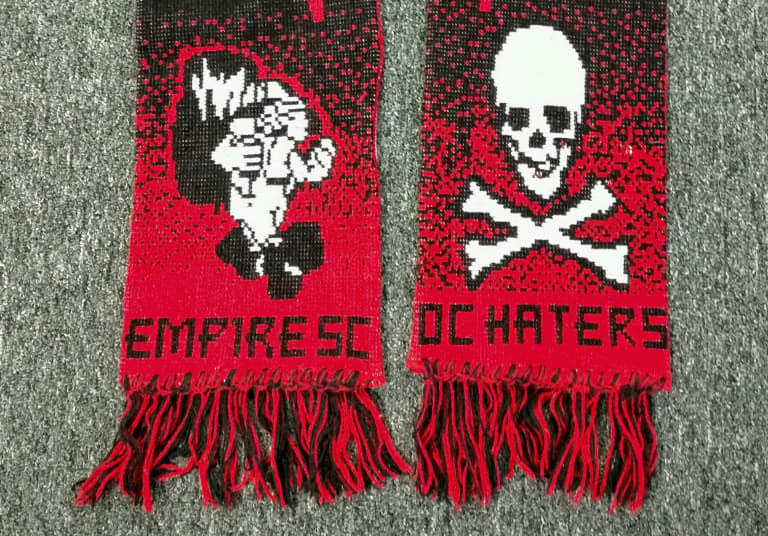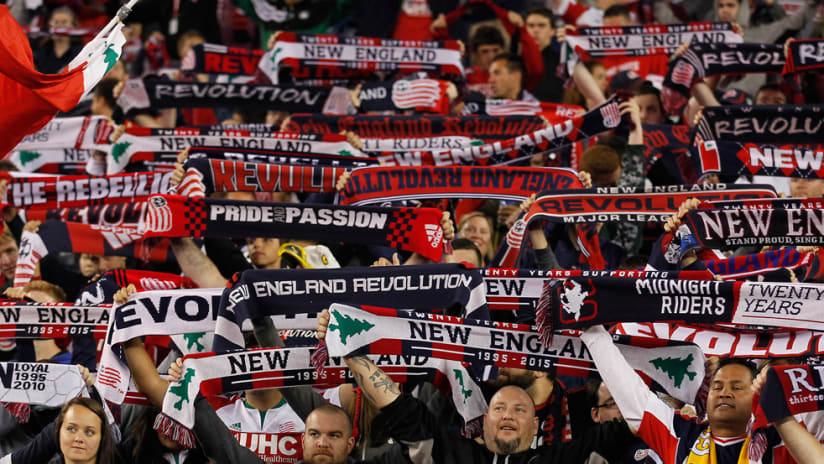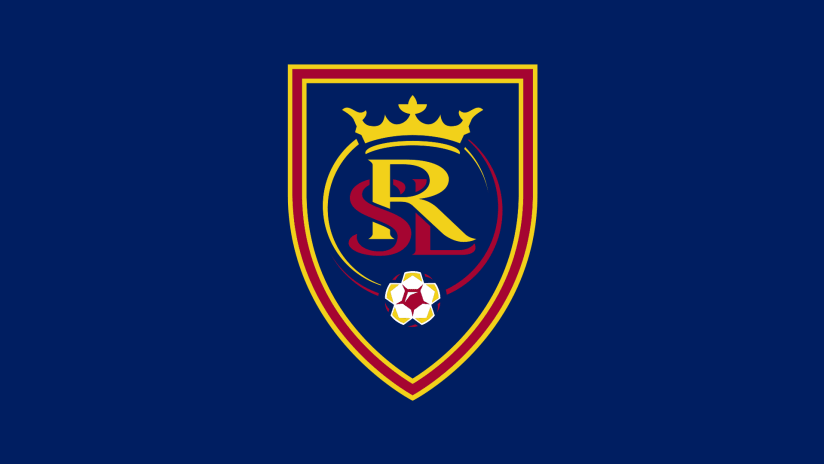In July in Orlando or Houston or Los Angeles, a scarf seems like the last thing you would want to take to an outdoor event. And yet, go to an MLS match in those cities, and they’re still everywhere.
The soccer scarf has transcended its original pure utility, when early 20th-century English fans needed warmth while watching mid-winter matches in the biting cold. Now, it’s an emblem of fan support that can be proudly worn, held up during a match, traded with other fans, and displayed as a memento. And in MLS, the versatile scarf has been part of fan culture from the league’s inception.
So first, a quick look at how soccer scarves first appeared, in the early 1900s. The scarf harkens back to the early 20th century in England. The site for Diehard Scarves, which offers history and scarf-centric features along with their scarves, explains it succinctly. “You have to imagine typical attire in the 1900s,” they note. “Black coats were commonplace and team jerseys were not. There was no easy way to show off what team you supported until you proudly wore your team colors around your neck.”
Soccer historian David Goldblatt, whose books include The Ball is Round (a global history of soccer), notes that home-knitted scarves are showcased in “photos of English fans in the early Twentieth Century, especially on the big day out to the FA Cup final.” He also notes that in the 1970s, greater commercialization of the game led to manufactured scarves becoming part of soccer merchandising.
By the time MLS was preparing to launch in the mid-1990s, initial supporters’ groups for the D.C. United and Revolution were already thinking about making scarves part of their support. Enterprising, emerging companies like Sportsscarf, founded in 1997 in Massachusetts, gave American soccer fans ready stateside options for making scarves.
Matt Mathai, who founded the Screaming Eagles in 1995, created a scarf for supporters early in the inaugural 1996 season. “A lot of people modeled themselves after English supporters” in the group’s early days, he says, so a scarf was essential from the outset.
The design was exactly what you’d expect of a scarf announcing their presence, featuring an eagle, the team’s red-and-black color scheme, and the three stars of the D.C. flag. Mathai, collaborating with a fellow fan on the design, had an initial batch of 50 made through a supplier in the New York area. “We sold them for $1 more than our cost to gauge interest,” he recalls. “Turns out there was a lot!”

The Revolution also made scarves for the inaugural season. Longtime Revs fan and scarf designer Evan Whitney recalls that the Midnight Riders’ first scarves “were actually hand-made by a grandmother of a Kansas City Wizards supporter.” By 2000, Whitney notes that the growing number of scarf manufacturers, plus the e-commerce connecting said manufacturers to fans, allowed his group to order more scarves and expand their offerings.

Though the MetroStars had one of the league’s first supporters’ groups, with the Empire Supporters Club, they were a little bit later to the scarf party. In fact, as ESC founder Kevin McAllister remembers, “[their] first scarf was a McDonald’s-sponsored scarf that Metro distributed to fans [in 1999],” he says. “They gave us about 100 of them to give to our members. Our members were not wild about the McDonald’s sponsorship, and the ESC did its own scarf the next season.”
That scarf proclaimed its supporters the “Bridge and Tunnel Firm.” But in keeping with ESC’s early positioning as D.C. United’s adversaries, they also included “D.C. Haters” on the end of the scarf, below a skull and crossbones. (Mathai says that Screaming Eagles fans “were definitely aware those scarves were in circulation.”)


Another Empire Supporters Club scarf, from the early 2000s
Meanwhile, in Chicago, the nascent Barn Burners (who would become part of a unified Section 8 Chicago supporters group a year later) created a scarf for the Fire’s first season in 1998.

They also created one in 1999 to celebrate the Fire’s 1998 MLS Cup and U.S. Open Cup victories.

According to Barn Burners founder Don Crafts, he knew that they were traditional for European fans. He also saw first-hand how supporters in the US utilized scarves in Seattle, where he followed the A-League edition of the Sounders up close in 1994.
So, he brought scarves to the Fire for its inaugural season, because. As he puts it, he “knew no one else would!” He adds that Chicago is blustery enough — especially at the beginning and end of the MLS season — to render scarves totally practical, too. The scarves caught on with his fellow supporters, and then, as he notes, “the rest of the stadium figured it out.” And the rest, as they say, is scarf history.
If you've got scarf fever now, check out MLS's Kick Childhood Cancer and the social campaign Scarftember. Artist Maria Lauren Lambilis has created a Kick Childhood Cancer benefit T-shirt and a scarf for every MLS team, with proceeds from their sales to benefit the Children's Oncology Group, one of the leading childhood cancer experts in the world and a partner of MLS WORKS.
To celebrate, too, select scarves from Sept. 17 to Sept. 23 on MLSstore.com; go here to shop.
In addition, you can also support Kick Childhood Cancer by posting a photo of you with your favorite MLS scarf to Twitter or Instagram, using the hashtag #ScarvesUp and tagging @MLS. The league will donate for each post.
Editor's Note: This piece originally ran on Sept. 20, 2016.













